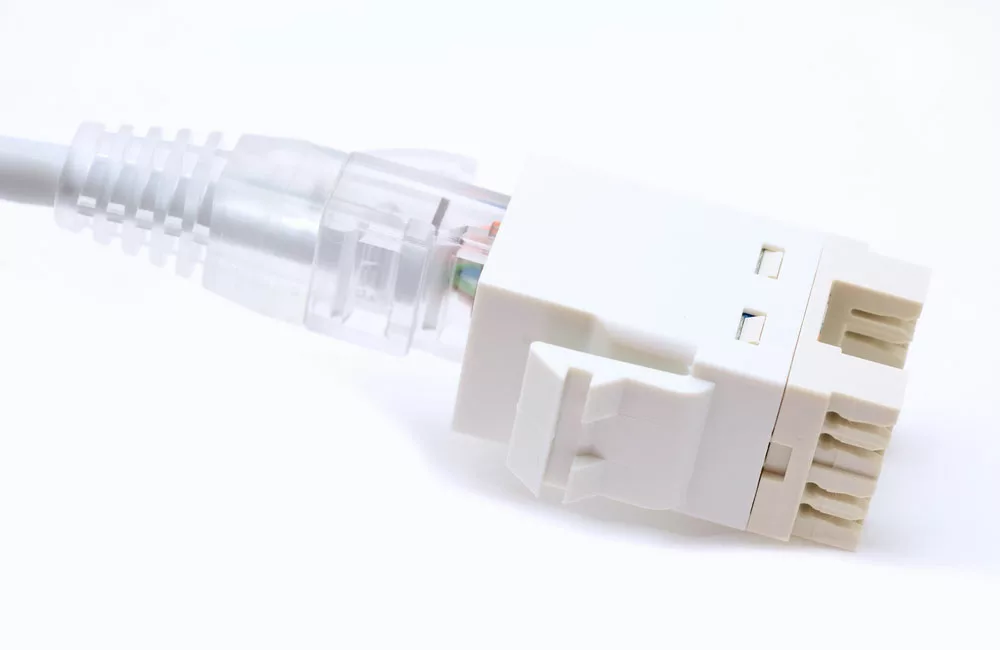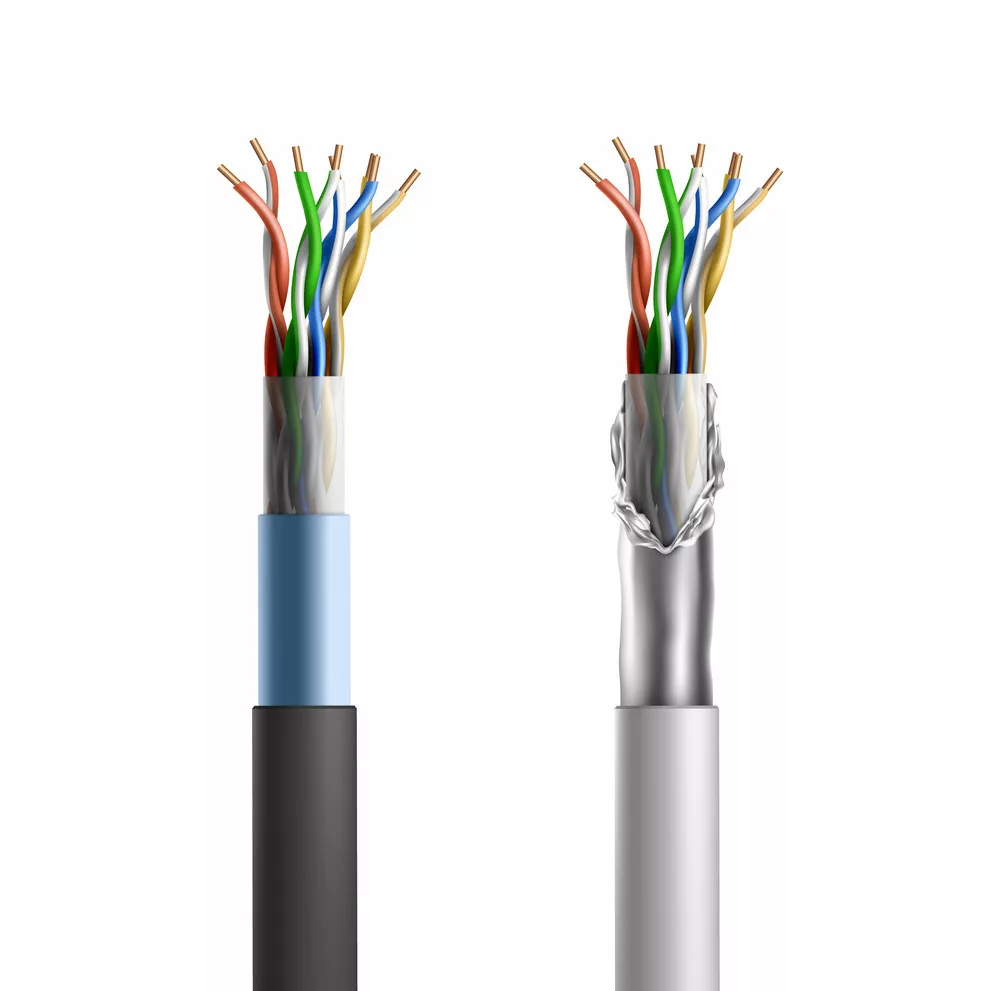About Ethernet Cable For Streaming, Did you just purchase a new smart device and are looking to enjoy streaming services on it?
However, before enjoying streaming services, you’ll need to connect your device to the internet either by using WiFi or wirelessly.
With that in mind, you’re probably not sure about the best ethernet cable for streaming.
The article below will discuss in length the various ethernet cables you can use.
Table of Contents
- Ethernet Connection vs. WiFi Connection: Which Is Better For Streaming?
- What Type of Cable Is Right For Streaming
- Conclusion
Ethernet Connection vs. WiFi Connection: Which Is Better For Streaming?
| Advantage | Disadvantage | Setup | |
| Ethernet Connection | You don’t need a password to enter; Stable connection with minimal interference; Minimal bandwidth reduction over long distances; No latency, higher bandwidth | You need a cable to run from your device to router | Allows in any room; No cables needed. |
| WiFi Connection | You don’t need a password to enter; Stable connection with minimal interference; Minimal bandwidth reduction over long distances; No latency, higher bandwidth | Set up your internet box in close proximity to your device. And run a cable from the device to the router to automatically connect to the network. If the router is in a different room, you’ll need to measure the cable length to reach your device. | Set up your internet box in close proximity to your device. And run a cable from the device to the router to automatically connect to the network. If the router is in a different room you’ll need to measure the cable length to reach your device. |
Minimum Speed Requirement For Streaming
Below are the internet speeds required for some of the most popular streaming devices that accept ethernet connection networks.
Roku Ultra
The device can support streaming quality of up to 4K Ultra HD at a minimum speed of about 25 Mbps.
Apple TV
With an Apple TV device, you can choose to watch your media from various resolution options.
The required minimum streaming speeds are as follows; 4K at a recommended speed of 25 Mbps, 1080p at a recommended speed of 8 Mbps, 720p at a recommended speed of 6 Mbps, and lastly, SD at a recommended speed of 2.5 Mbps.
Nvidia Shield TV
If you use an Amazon Fire Stick together with its ethernet adaptor, you will get a more reliable streaming experience.
Amazon Fire Stick + Ethernet Adaptor
If you use an Amazon Fire Stick and its ethernet adaptor together, you will likely get a more reliable streaming experience.
Its required minimum streaming speeds are as follows; Ultra HD at 25 Mbps, HD at 5 Mbps, SD at 3 Mbps, and broadband at 1.5 Mbps.
Google Chromecast + Ethernet Adaptor
Similar to the Apple TV, the Google Chromecast together with its ethernet adaptor has a variety of resolutions to choose.
To stream 4K media, you’ll need speeds of about 20 Mbps.
Netflix
For Netflix, the minimum streaming speed requirements are as follows; Ultra HD at 25 Mbps, HD at 5 Mbps, SD at 3 Mbps, and broadband at 1. 5 Mbps.
However, you should ensure you have an HD subscription and have your quality settings at high or auto.
YouTube
For YouTube, the minimum streaming speed requirements are as follows; 4K at 20 Mbps, HD 1080p at 5 Mbps, HD 720p at 2.5 Mbps, SD 480p at 1.1 Mbps, and SD 360p at 0.7 Mbps.
What Type of Cable Is Right For Streaming
If you observe the minimum speed requirement for device streaming, you’ll notice that most streaming services require about 25 Mbps.
Obtaining such speeds ensures you get the smoothest stream at the highest quality.
Therefore, to attain such speeds, get different Cat cables running at gigabit speeds for a distance of about 100 meters.
Your Internet Service Provider Speed alongside the Cat cable will help ensure you get the best streaming experience.
However, most people are still wondering which cable to use.
Ethernet Cable Types
Below are the various ethernet cable types you can choose from.
Cat 5
Offering speeds of up to 100Mbps at a distance of 100 meters (100 MHz bandwidth), it was mainly in application on older networks.

Caption: Cat 5 cable
Cat 5e
Offering speeds of up to 1000 Mbps at a distance of 100 meters (1000MHz bandwidth), it is basically an enhancement of the Cat 5 cable.
And it is widely used today because of its cost and performance. It offers better performance compared to the Cat 5 cable and was the first gigabit cable.
Cat 6
Offering speeds of up to 10 Gbps at a distance of 55 meters (250 MHz bandwidth), it is a major improvement of the Cat 5e cable.
It is more tightly wound and has a braided shielding or outer foil, which helps prevent noise interference and crosstalk from external sources.
However, although it offers amazing speeds, its distance is limited compared to the previous options.

Caption: Cat 6 cable with twisted and shielded pairs of wire
Cat 6a
Offering speeds of up to 10 Gbps at a distance of 100 meters (500MHz bandwidth), it is capable of supporting twice the bandwidth of the Cat 6 cable.
Further, it offers fast speeds at an increased distance.
Cat 7
Offering speeds of up to 10 Gbps at a distance of 100 meters (600 MHz bandwidth), the Cat 7 cable is precise, with each pair of wires individually shielded and the cable as a whole.
While the Cat 7 cable is very similar to the Cat 6a cable, its precise specifications make it more reliable.
Cat 8
Offering speeds of between 25 Gbps to 40 Gbps at a distance of 100 meters (2000MHz bandwidth), it is the latest ethernet cable standard.
It offers the highest performance possible and costs much more compared to the previous options.
Ethernet Performance vs. Cat Type vs. Price
To boost network performance in your home, the solution isn’t necessarily buying the fast and most modern ethernet cable type.
As a homeowner, you’ll often find that buying the fastest and most modern cable type is rather costly.
Most standard household routers offer Gigabit transfer speeds of about 1000 Mbps at a distance of around 100 meters which is typically the speed of the Cat 5e ethernet cable.
Keeping in mind that most homeowners purchase a subscription offering speeds of about 25 Mbps to 100 Mbps.
It means that getting a better and faster ethernet cable won’t, in turn, increase your internet speed.
If you own a faster 10 Gbps router, you’ll also need to consider your Internet Service Provider, which offers speeds of up to 10 Gbps. For such a speed, you can attain a Cat 6 ethernet cable.
However, if your home is close to several wireless signals, such as a busy WiFi environment or a nearby cell tower, the Cat 7 ethernet cable would be the better option.
If the main aim of your setup is to get a future-proof plan, then getting a better ethernet cable standard makes sense.
However, if your main aim is to get faster speeds, getting a better ethernet cable standard won’t make much difference.
What Is The Best Ethernet Cable For Streaming
In terms of streaming the best ethernet cable type is the Cat 6 ethernet cable. When you consider the better cable types, it only makes sense if you are trying to future proof your setup.
For instance, a Cat 8 or Cat 7 cable makes sense when installing your setup behind walls that aren’t easy to run through.
Although, if you have the money, getting a Cat 8 or Cat 7 cable could be the best option, even if you won’t get much of a difference.
Conclusion
Today most Smart TVs have an ethernet port to allow wired network connections.
Based on the minimum streaming speed requirement of many smart TVs, the recommended internet speed for streaming is 25 Mbps.
There you have everything you need to know to make the right choice on what ethernet cable for streaming.
Keep in mind that buying a more expensive cable doesn’t mean you’ll get the best streaming experience.
Remember to keep in mind your ISP and router’s maximum bandwidth. For all your ethernet cable needs, feel free to contact Cloom Tech.
